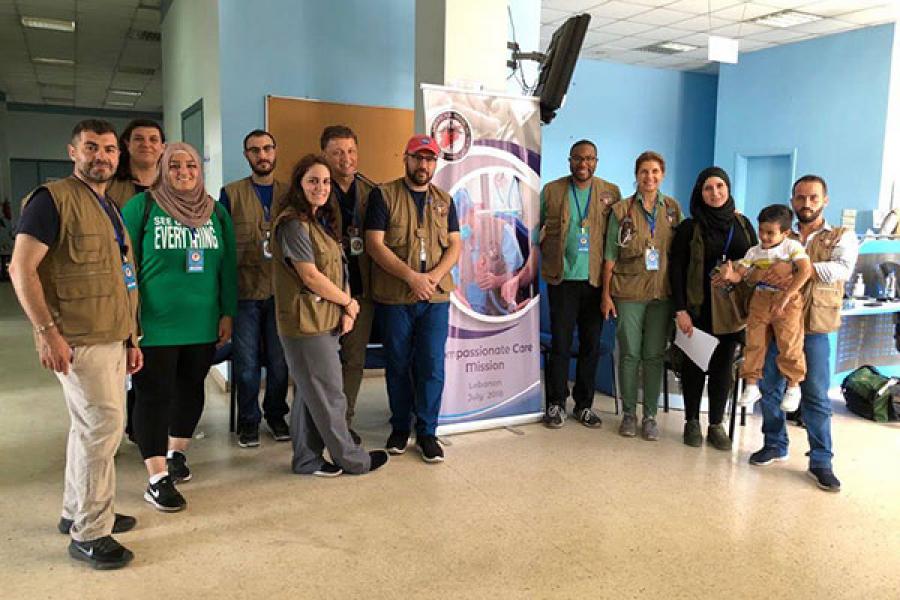Some research just has to be done on-site, said historian Mostafa Minawi, and he should know.
Thanks to an ANAMED fellowship, he spent seven months in Sudan, Turkey, the United Kingdom, Somalia and Djibouti, tracking down details for his new book on Ottoman/European/Ethiopian competition over the coast of Somalia. The most surprising thing he found, he said, was how alive that history still is in some areas.
After doing traditional archival research in Istanbul, London and Khartoum, Minawi set out to visit some of the important sites he’d uncovered in documents. A grueling 13-hour ride across a roadless desert in Somalia brought him to Berbera and Saylac, where many Ottoman-era structures are still standing – despite documented British denials that the Ottomans had possessed those historic port cities.
Ottoman-era governor's house in Saylac, Somalia
“They were definitely Ottoman structures,” said Minawi, “something I would never have found evidence for if I hadn’t gone there myself. The people are very strongly aware of the Ottoman heritage there.” Despite physical hardship and the need for a military escort, Minawi says the data he collected was well worth it.
“Talking to people there forced me to flip my research and to deal with local notions of this history,” said Minawi, associate professor of history and director of the Ottoman and Turkish Studies Initiative.
Minawi went from Somaliland to Djibouti across desert populated only by desert foxes, deer and nomads with herds of camels. At first the border guards didn’t want to let him cross, but in the end he gained entry and interviewed a member of the country’s former presidential family, now a lawyer in Djibouti City. In their conversation, Minawi learned firsthand how vivid Ottoman history is for the people in the area.
“He told me that he’s descended from the Ethiopian emperor and the Ottoman governor from the late 19th century, and he believed that his recent ancestors should have been the legitimate rulers of the whole region, embodying Muslim and Christian inhabitants of this diverse region. But he believes the French colonial rulers didn’t want that to happen because they were supporting someone else,” said Minawi. “Regardless of whether this narrative is based in historical reality or not, living perception of the past is fundamental to our work as historians. The history of the region is not some abstracted imperial diplomatic game to the local people. It’s alive to them. You cannot possibly write about a place without having been there: Archival work is not enough.”
Mostafa Minawi, far left, with other volunteers at a Tripoli clinic for Syrian refugees
Minawi’s trip ended in Lebanon at a Syrian refugee camp, where he volunteered to serve as a translator for a medical mission organized through the Syrian American Medical Society and led by Josyann Abisaab, a physician at Weill Cornell Medical. He was surprised to find that his expertise in the region’s history proved equally as valuable as his facility with languages. The doctors knew little about the region, the historical reasons for the conflicts, the differences in the ethnic groups in the region or who the Kurds, Alawites and Sunni are, explained Minawi. They sought him out with so many questions that he often spent evenings talking about the history of the region.
“Some of the amazing doctor volunteers would gather around me at dinner,” said Minawi. “The doctors were interested in the people beyond them just being patients, because they deeply believed that the more you know about the people, the better you can serve them.”
Although his work as a teacher and translator was exhausting, and the human suffering he encountered overwhelming, Minawi was grateful for the opportunity to contribute. He’d like to see the kind of education he offered the doctors become an ongoing part of medical missions to the refugees.
“When you’re face to face with people, you can’t be cynical,” he said. “These are individual human beings whom you can relate to. When you explain their history and the context of their current living conditions, they become three-dimensional individuals.”
This article also appeared in the Cornell Chronicle.






![German map showing the Gulf of Aden around 1860. Credit: By August Heinrich Petermann (Somaliland and Aden: Images from the Past) [Public domain], via Wikimedia Commons](https://as.cornell.edu/sites/default/files/styles/4_5/public/field/image/Aden_gulf_1860-450px.jpg?itok=uOUsltCL)